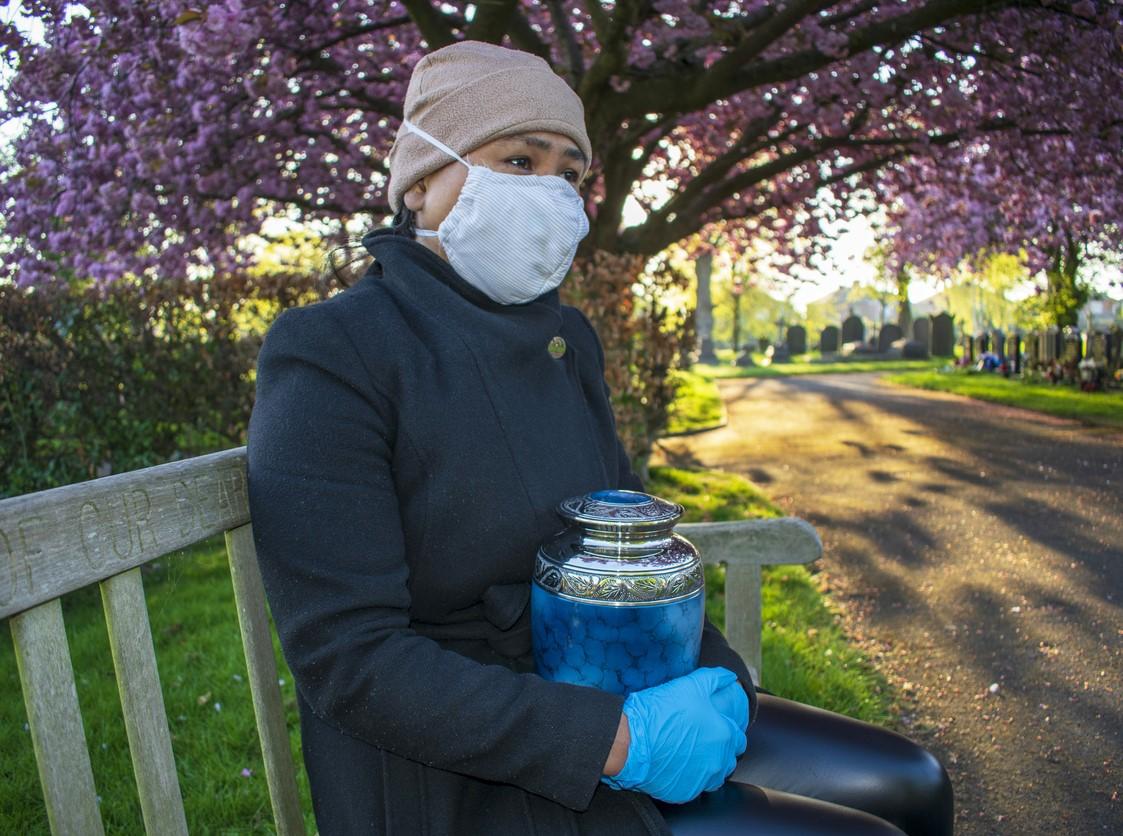The COVID-19 pandemic's effect on US life expectancy has disproportionately hit minorities, according to new studies in BMJ and JAMA Network Open, with the former finding that overall US life expectancy—which dropped almost 2 years from 2018 to 2020—hasn't been this low since 1943, during World War II.
"I've been studying the US health disadvantage for many years right now," says Laudan Aron, MA, co-author of the BMJ study and senior fellow at the Urban Institute in Washington, DC. "But it's always still a little shocking and distressing to see the numbers and just to see how exceptional and different we really are from so many other societies, which really kind of points to the fact that what we're witnessing is really a set of choices about how we have organized our society and how we are using human resources and supporting people."
Life span drops to WW II levels
The BMJ study included a look at life expectancy from 2010 to 2020 within the United States as well as the widening gap between US life expectancy and 16 high-income peer countries, including the United Kingdom, Israel, France, Denmark, Switzerland, and South Korea. Overall, US life expectancy increased 0.08 years from 2010 to 2018 but then decreased 1.87 years from 2018 to 2020 (78.74 to 76.87 years).
Men showed greater losses than women (-2.16 years vs -1.50 years), and Black and Hispanic people showed as much as 2.9 times the loss of White people (-3.25 and -3.88 years, respectively, vs -1.36 years). These decreases reverted Black men's life expectancy to their 1998 levels—67.73 years—and erased the longevity advantage Hispanic men had (2.88 years longer than White men in 2018 to 0.20 years shorter in 2020).
While many peer countries did not have 2019 data available, the researchers note that, at least for the United States, most of the change was likely from the pandemic, as life expectancy increased by only 0.1 year from 2018 to 2019. Notable countries that were excluded for lack of information were Canada, Australia, Germany, Italy, and Japan.
"The overall picture is not going to be different [if those countries were included]," Aron says. "There might be small changes in the numbers in terms of the differences of the United States and the average, but the United States has kind of been on the pretty unique, exceptional path in terms of its mortality and morbidity vis a vis these other advanced democracies, at least since 1980, and that was certainly true for 2020 as well."
Compared with other high-income countries, the United States widened the already existing life expectancy gap from 1.88 years lower in 2010, to 3.05 years in 2018, and now to 4.69 years lower in 2020. While 10 countries also saw decreases from 2018 to 2020, they were less than the United States, ranging from 0.12 in Sweden to 1.09 in Spain. The remaining six countries increased their life expectancy despite the pandemic.
The researchers stratified data by race only for the US population. Even so, they note that Black men and women saw decreases in life expectancy from 2018 to 2020 that were 12.3 and 20.3 times greater than peer countries' average decreases for men and women of any race. The corresponding comparison was even larger for the US Hispanic population, which saw 15.9 and 22.5 times greater decreases for their men and women, respectively. And, while US White people saw the least decrease (-1.36 years), it was still greater than what was seen in peer countries (-0.22 years).
"The large number of covid-19 deaths in the US reflects not only the country’s policy choices and mishandling of the pandemic but also deeply rooted factors that have put the country at a health disadvantage for decades," the researchers write. "Foremost among these root causes is systemic racism; extensive research has shown that systems of power in the US structure opportunity and assign value in ways that unfairly disadvantage Black, Hispanic, Asian, and Indigenous populations, and unfairly advantage White people."
Aron says, "It's not an academic, not a theoretical discussion, because other countries are supporting their populations and investing in the health and wellbeing of other people, often at a fraction of the cost."
Minorities continue to see shorter lives
In the JAMA Network Open research letter, the authors looked at how COVID-19 affected US life expectancy at birth from Feb 1 to Oct 3, 2020, and compared their projected results for the rest of 2020 with the actual results.
With a medium-level COVID mortality simulation, they estimated that the total US population saw a 1.13-year decrease in life in 2020, with 0.68 years lost for White people, 2.10 years for Black people, and 3.05 years for Latino people.
The 2020 figures showed that White people lost 0.94 years (0.26 years over prediction), Black people lost 1.90 years (0.20 under), and Latinos lost 3.03 years (0.02 under). While the change in life expectancy for Black people was smaller than the authors thought, they attribute it to COVID surges in Midwestern and Mountain states.
As for Latino people, the authors say the pandemic made them more vulnerable because of factors such as multigenerational housing, frontline jobs, and lower healthcare insurance enrollment. Prior to COVID-19, they lived 7 years longer than Black people and 3 years longer than White people, smoked less, and had fewer comorbidities.
"Life expectancy is a metric of population-level mortality in a given year, and it is sensitive to deaths at younger ages," said lead author Theresa Andrasfay, PhD, of the University of Southern California (USC), in a USC press release yesterday. "Though COVID-19 disproportionately killed older Americans, substantial numbers of younger Black and Latino Americans had their lives taken by COVID-19, which contributed to greater life expectancy reductions for these populations."
The data included 380,868 COVID-19 deaths in 2020, with race/ethnicity available for more than 99% of them, including 230,016 White people, 60,405 Black people, and 69,066 Latino people. Incoming data for 2021 continue to show a loss in US life expectancy as well as racial disparities, the researchers write.
While the authors of the BMJ study and a related commentary by Magali Barbieri, PhD, with the Department of Demography at the University of California, Berkeley, caution that all life expectancy studies provide only a snapshot, they say they can show who was most affected. Aron adds that it's not all about recovering longevity; it's also about realizing what the emotional and economic consequences are to those who are left behind.
"The covid-19 pandemic has thus operated as a magnifier of already existing vulnerabilities within the US population," Barbieri concludes in her commentary. "Understanding the reasons for the disproportionate toll of the disease on the US population and developing appropriate interventions and policies provides an opportunity to correct the structural factors that have historically hampered US progress in life expectancy and that have driven large social and racial and ethnic inequities in the risks of death."




















